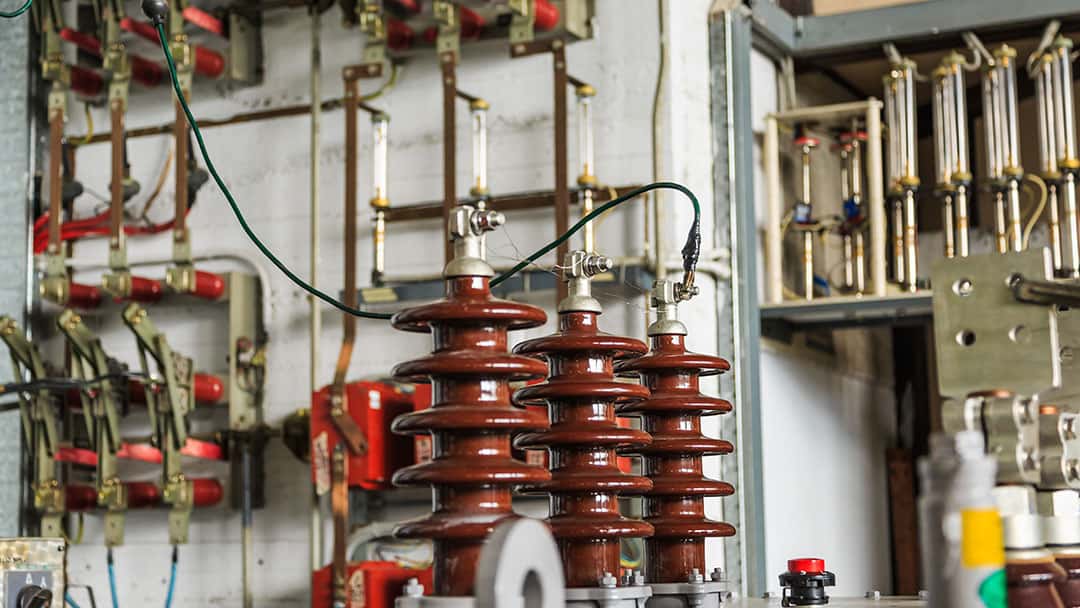Electrical safety is paramount when crafting — or upgrading — technology. Despite all our advances, we still have to exercise extreme caution when conducting tests.
The function of HIPOT testing is to test the voltage strength of a given application. This function allows engineers, construction workers, and repair professionals to interact safely with various forms of equipment. This test also lets you know the limits of your device.
What is HIPOT testing, how does it work, and how can you use it? We’ll explain in further detail below so you can continue to operate safely and confidently.
What is HIPOT Testing?
Let’s break down the HIPOT testing system at its most basic. It’s a shorter term for ‘Dielectric Voltage-Withstand Test’, designed to test the voltage of various applications.
Also known as the ‘high-pressure test’ or the ‘pressure test’, it’s highly likely you’ve already interacted with the results of this testing system. It’s used in a wide variety of everyday applications, which we’ll explore more below. The HIPOT test breaks down into several key metrics, all designed to measure details such as:
- Applied voltage
- Test duration
- Rate of application
- Application type
- Equipment leakage
Related: What Is A Power Distribution Unit (PDU)?
The Function of HIPOT Testing in Everyday Applications
What is HIPOT used for? If you interact with high-voltage electronic equipment, you’ve already enjoyed the results of this vital testing system.
Electrical currents are powerful but highly unwieldy. Using too much can cause a device to set fire, shock people, or stop working. Likewise, not enough electricity will cause a piece of equipment to underperform. Everyday applications that benefit from the aid of HIPOT testing include (but aren’t limited to):
- General consumer electronics
- Home computers
- Generators
- Cables
- Military devices
The HIPOT test is used for high-voltage applications to increase their safety and precisely pinpoint internal errors such as corrosion or nicked wires.
Related: What Is A Hyperscale Data Center? Full Hyperscale Breakdown
Breaking Down the HIPOT Test
The HIPOT test system, just like any other metric, needs to be followed closely to be effective. It pinpoints too much or too little voltage in a piece of equipment.
The equation used to test voltage in the HIPOT test is 2X (Operating Voltage) + 1,000 V. This formula is considered highly reliable for most high-voltage applications, though it can still be adjusted depending on the equipment.
The time duration measurement is one minute or less. This can still change according to the unique safety regulations of the application. Only qualified electrical workers should perform a HIPOT test to avoid the risk of injury or death.
Who can you call to test out the limits of your data center? C&C Tech is proud to tackle the common (and not so common) challenges facing today’s data center infrastructure to save businesses money.
Supply
This is where a HIPOT connector will be carefully situated between the equipment being tested and the ground. Solid earth is widely known to be safe due to its ability to cancel out electricity, so the spare voltage will usually be harmlessly absorbed.
That said, wet earth will interact poorly due to water conducting electricity. Sample tests can be done on similar equipment if you’re concerned about losing expensive supplies in the testing process.
Safety Ground
This is a term denoting a safe location to conduct tests (also dubbed ‘Earth ground’). All HIPOT tests should be isolated from other equipment and materials to reduce interference.
Another safe ground that can be used is the grounding electrode conductor. This is explicitly designed to complete a circuit or connect to a semiconductor.
Test Voltage
The test voltage of the HIPOT test comes in two forms: the AC and the DC. AC is short for ‘alternating current’, while DC is short for ‘direct current’.
Most people are familiar with the function of AC, as it’s used for everyday applications such as room fans, phone chargers, and kitchen electronics. While it seems odd to use such a high-voltage test for AC, this test can be helpful when determining the efficiency (and limitations) of a device.
AC voltage is used to test the capabilities of insulation when voltage is at peak capacity. A DC test voltage, on the other hand, can be lowered significantly. The pros and cons of each method depend on the purpose of the equipment being tested.
Conduct tests at various extremes to account for issues such as:
- Faulty wiring
- Power outages
- Underperformance
Related: Data Center Tiers: Guide To Tier Classification System
HIPOT Testing – Final Thoughts
HIPOT testing is how we ensure the complex electronics and equipment we interact with work correctly. When nearly 1,000 people every year die from electricity-related injuries, you can never be too careful.
The HIPOT testing system measures high-voltage currents in everyday applications and more specialized military equipment and infrastructure. It relies on several AC and DC voltage measurements that inform of weak points such as corrosion or faulty wiring.
Data centers are a necessity in a closely connected world. Due to their nature as highly concentrated electricity and heat locations, they are also one of the most dangerous. You must maintain them correctly not just to save money but to stay safe.
A sturdy data center needs a specialized eye. Call C&C Tech today to outfit your data center applications with experienced project managers, designers, and procurement specialists.
Last Updated on June 8, 2023 by Josh Mahan




